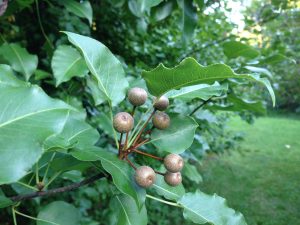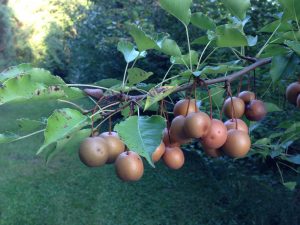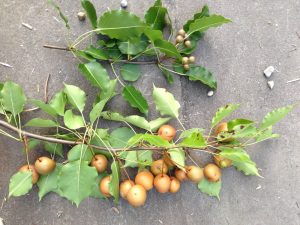Think about what might be the perfect ornamental tree for your yard. Fast, compact growth, pretty white flowers in spring, glossy green foliage in summer, spectacular scarlet – purple fall color, and relatively resistant to pests and diseases. It is easy to propagate and transplant and adapts to a wide range of site conditions. You want one, don’t you?
This describes the ‘Bradford’ cultivar of Callery (ornamental) Pear. It is difficult to find a downtown city center or suburban subdivision that is not adorned by these ornamental pears.
But the big shortcoming of ‘Bradford’ pear was that it has such narrow branch angles that weaken the architecture of the tree such that it frequently splits at the trunk. So the quest was on to introduce improved cultivars with better branch architecture. Enter additional ornamental pear cultivars such as ‘Aristocrat,’ ‘Chanticleer,’ ‘Cleveland Select,’‘Redspire’, and ‘Whitehouse’.
But unfortunately for all of us, that while these ornamental pears did not fruit much if at all on their own, they do become fruitful when they cross-pollinate. The result is that “volunteer” pear trees are seeding themselves in alarming numbers and in many areas where the pear trees have not been planted, helped along by birds. While the ornamental cultivars typically set very small fruit when they are fruitful, there is considerable variability in fruit size amongst the seedling populations, as illustrated by these photos.
What can home gardeners do? If you have ornamental pear trees in your landscape, keep a close watch for fruit set. Remove seedling trees immediately or keep them mowed very low to prevent flowering and fruiting. If your existing landscape specimens bore fruit this year, you can spray next spring with fruit inhibitor hormone (e.g. ethephon, Florel Fruit Inhibitor) to reduce fruit set. Note that timing and thorough coverage is critical, the spray must be applied when plants are in early stage of full bloom, before fruit sets. Typically ornamental pear is in bloom for 10 – 14 days. It will be difficult to provide thorough coverage on larger specimens.
Ornamental pears typically do not last long in the landscape, frequently breaking up in high winds and storms. You might consider tree removal, especially for trees that are already in decline or are young enough to easily remove and replace with more appropriate species.


